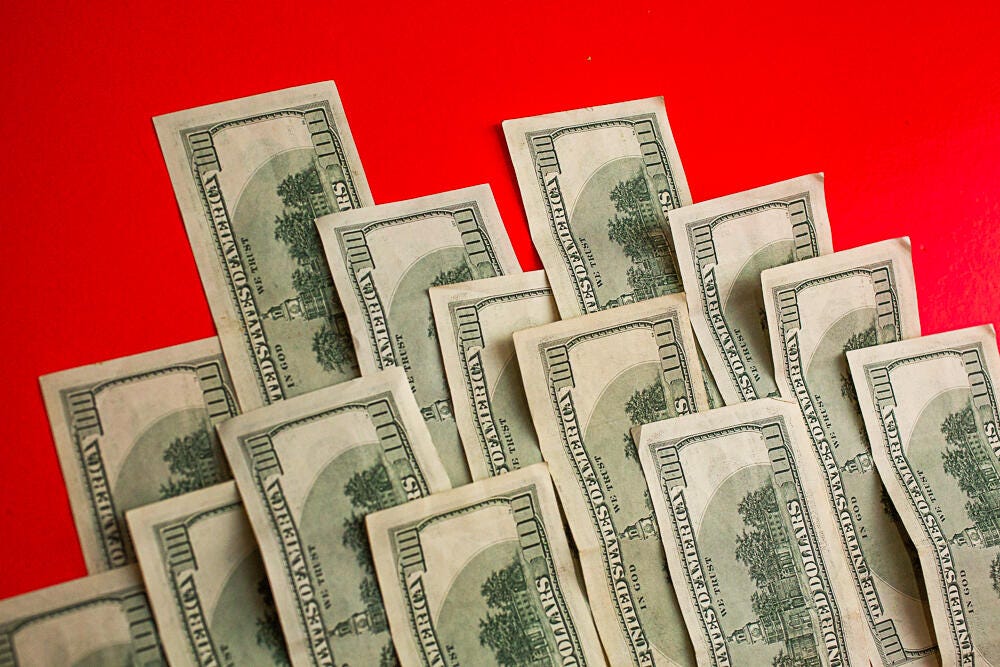[ad_1]

If your stimulus check never arrived, you may need to request a payment trace with the IRS.
Sarah Tew/CNET
The third stimulus checks continue to go out in weekly waves from the IRS and US Treasury. Veterans who receive VA benefits and those who get SSI and SSDI payments were the most recent recipients of $1,400 checks. “Plus-up” payments for those who are now eligible for more money are also on the way. If you’re still waiting for your check, however, it could be that your payment is scheduled for later, you may have been skipped over, or something bigger is holding up the arrival of your $1,400 payment.
It can be challenging to find the reason your money might be held up, but the place to start is with tracking your third payment. If you suspect there is a bigger problem with your payment and it’s missing — maybe the IRS tracker tool says the agency has sent your money already but you’ve not received it — you may want to ask the IRS to hunt down your check. The same applies if you didn’t get all or part of the first and second stimulus checks. There are a few ways to track your payment, depending on your situation. Some people have to file a Recovery Rebate Credit (even if they don’t usually file taxes). Others will need to request something called an IRS payment trace.
We’ll explain what a payment trace is, including the two scenarios in which you may need to request one, as well as how to get started. We’ve also got stimulus payment guides for older adults, young adults, non-US citizens and those living abroad and people who pay or receive child support. Plus, here’s what we’re hearing about a potential fourth stimulus check, all of the tax credits you could claim this year, what may happen with student loan forgiveness and the latest on the child tax credit (calculate your total). This story was recently updated.
Do a payment trace if Get My Payment says your payment was sent — but you don’t have it
The IRS continues to send out the third stimulus check to millions of people, so there’s a good chance that if you haven’t gotten yours yet, it’s in the works. You can check the status of your third check using the free IRS tracking tool, called Get My Payment. We have full instructions on how to use the Get My Payment tool and the different messages you might see there. You need to plug in your Social Security number or Individual Taxpayer Identification Number, date of birth, street address and ZIP or postal code. The portal will show your payment status, if your money has been scheduled to send and the payment method (direct deposit or by mail) and date. You might also see a different message or an error. (Here’s how to track your mailed check through the USPS.)
You’ll need to request a payment trace if the Get My Payment portal shows your payment was issued, but you haven’t received it within the following time frames.
When to request an IRS payment trace
| Method of payment | Time passed since IRS says it sent your payment |
|---|---|
| Direct deposit | 5 days |
| Check mailed to standard address | 4 weeks |
| Check mailed to a forwarded address | 6 weeks |
| Check mailed to a foreign address | 9 weeks |
This timeline was the same for the first and second checks as well. If your first or second stimulus checks are missing, you can no longer use the Get My Payment tool to track them down. Instead, you’ll need to view or create your online account with the IRS. To do that, provide your full name, email, birth date, Social Security number or Individual Tax Identification Number, tax filing status and current address. (We’ve got instructions on how to use your IRS online account here.)
We’re several months past the deadline for the second check to arrive by direct deposit, by mail or by EIP card, including for US citizens who live in foreign countries. If your account shows that your payment was issued but you didn’t receive it, you’ll need to request a payment trace.
Do a payment trace if you get an IRS notice that says payment was sent but you haven’t received the money
About 15 days after the IRS sends your third stimulus check (by either direct deposit, paper check or EIP card), you should get a letter from the agency confirming your payment and giving you a way to get in touch to report any problems. If you received this letter — also called Notice 1444, Your Economic Impact Payment — but you never received your payment, you’ll need to request a payment trace. Make sure you keep the letter — you’ll need the information to file your claim. (Here’s what to do if you lost the IRS letter about your stimulus check.) The same is true for the first and second stimulus checks as well.
How to request an IRS payment trace and claim your missing stimulus money
To request a payment trace, call the IRS at 800-919-9835 or mail or fax a completed Form 3911, Taxpayer Statement Regarding Refund. (Note that if you call the number, you’ll have to listen through the recorded content before you can connect with an agent.)
To complete Form 3911 for your third stimulus check, the IRS provides the following instructions:
- Write “EIP3” on the top of the form (EIP stands for Economic Impact Payment.)
- Complete the form answering all refund questions as they relate to your payment.
- When completing item 7 under Section 1:
- Check the box for “Individual” as the Type of return.
- Enter “2021” as the Tax Period.
- Do not write anything for the Date Filed.
- Sign the form. If you’re married and filing together, both spouses must sign the form.
You should not mail Form 3911 if you’ve already requested a trace by phone. And you should not request a payment trace to determine if you were eligible to get a check or to confirm the amount you should have received, the IRS said.
Payment trace claims: How the IRS processes them
The IRS will do the following to process your claim, according to its website:
- If you didn’t cash the check, the IRS will issue a replacement. If you discover the original check among your belongings, you’re expected to return it as soon as possible.
- If you did cash the refund check, expect a claim package from the Bureau of the Fiscal Service, which will include a copy of the cashed check. Then, follow the included instructions. The bureau will review your claim and the signature on the canceled check before deciding if it will issue a replacement. This is presumably to guard against stimulus check fraud.

Track down that missing money before it slips away.
Sarah Tew/CNET
How long until you get your stimulus money after filing a payment trace?
You should get a response from the IRS about six weeks after the agency receives your request for a payment trace, according to its website. But this could be delayed due to limited staffing. We’ve reached out to the IRS for more information.
For more on stimulus checks, here’s what we know about a potential fourth stimulus check and what else is in the stimulus package that may help you financially.
[ad_2]
Source link

